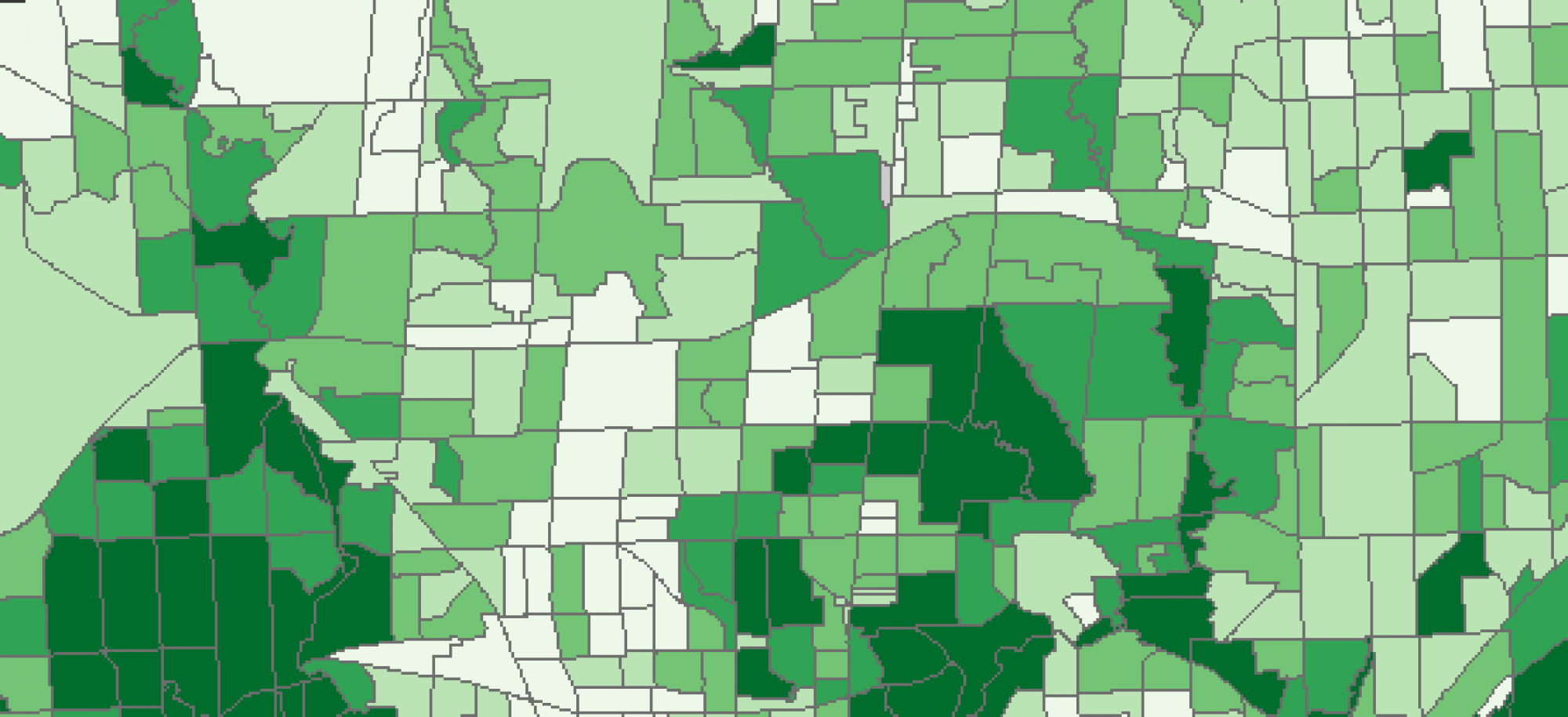Lung Cancer Mortality in the Eastern United States: A Geographical Perspective
For our final project Carly Gardner and myself examined the relationship between lung cancer mortality and various environmental and socio-economic variables in the eastern United States. Our analysis was at the county level and we did three primary analyses. The first was a hot spot analysis to identify significant hot or cold spots of lung cancer mortality and numerous environmental variables. The second was OLS regression ran using properly specified variables (specified using ArcMap exploratory regression). The explanatory variables chosen were proportion of non-white population, income, proportion of homes occupied by renters and the underlying radon risk to explain the dependent variable, the 5-year lung cancer mortality rate. Lastly we performed geographically weighted regression (GWR) (figure 1) to see how the specified explanatory variables were associated with lung cancer mortality over space. The results of our analysis indicated that there are numerous environmental and socio-economic variables which are significantly related to lung cancer mortality. Furthermore, the strength and direction of these relationships vary over space. This indicates that local, context specific, approaches must be taken when implementing lung cancer mitigation strategies as the lung cancer mortality rate is affected by underlying characteristics of local populations.
Please refer to our website (https://blogs.ubc.ca/mappinglungcancer/) for a more in-depth explanation of our methods, results, and discussion.

